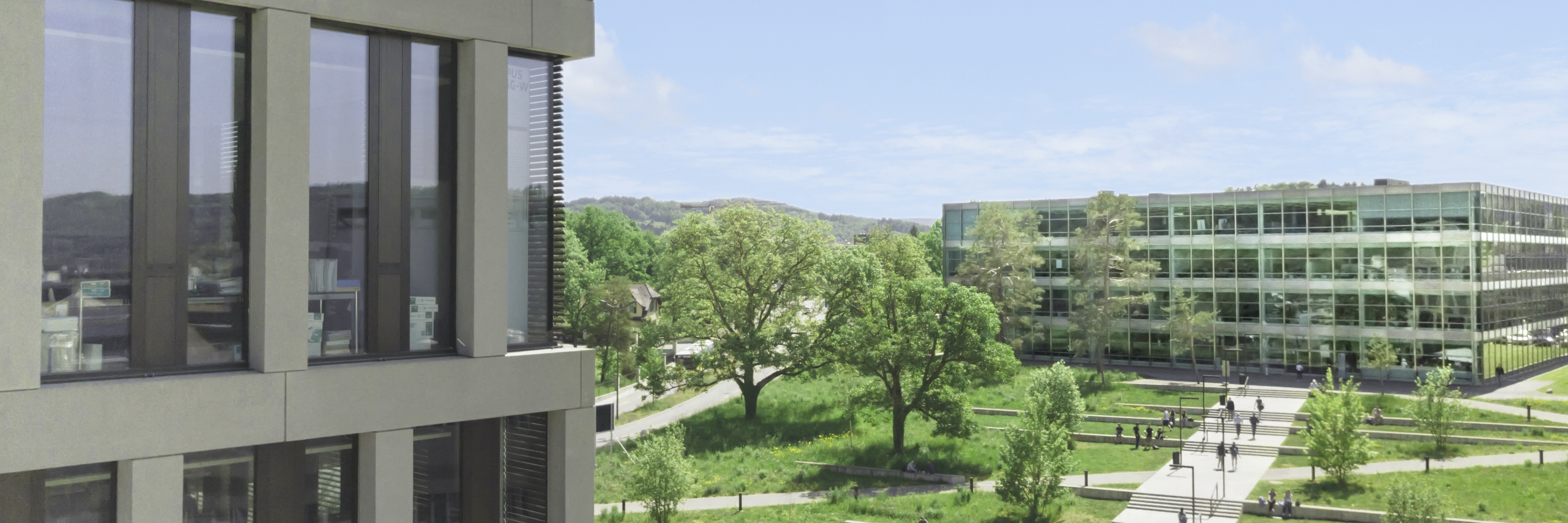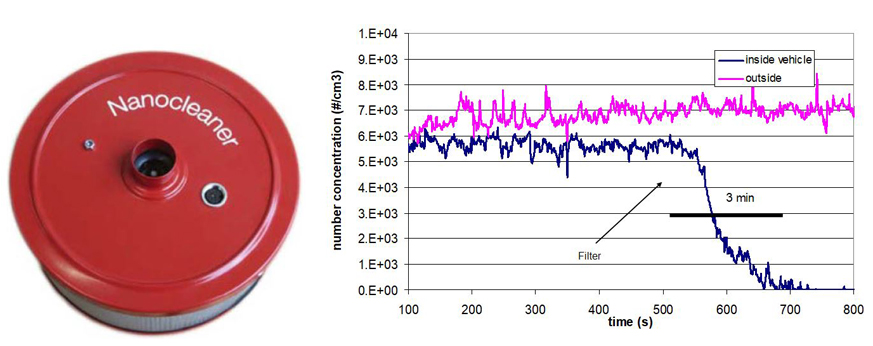Cleaning of contaminated air from nanoparticles and viruses
Viruses have sizes of 0.03 – 0.3 µm and therefore behave similarly to nanoparticles from com-bustion (soot), which we can remove with our particle filters with an efficiency of > 99 %. This project aims to test the suitability of these filters for use as “virus removers” to keep the air in hotspots such as public transport (vehicle cabins) largely free of nanoparticles and viruses.
Initial situation
The concentration of soot particles in vehicle cabins can be very high. To allow a reduction, a filter system named 'Nanocleaner' was developed with the aim to clean the air entering the cabin from outside. The target of this study is to develop a stand-alone filter system based on this cabin filter in collaboration with NanocleanAir GmbH and Swiss NanoAnalytics at the Adolphe Merkle Institute of the University of Fribourg. The aim is not only to filter nanoparticles consisting of soot, metal oxides or minerals but also to retain viruses, bacteria and germs. Since the viruses mainly do not come from outside, the room air itself must be filtered.
There are multiple applications possible: Filtration of vehicle cabins (especially of public transport such as buses, trains and airplanes), medical treatment rooms, shops, hairdressing salons etc. Another large market is in the veterinary sector, where air pollution by microorganisms and the associated health risks from viruses, bacteria and fungal spores are playing an increasing role.
Objectives
- The main scientific objective is to determine the degree of virus filtration and mainly answer the question whether there is a sufficiently reliable correlation between the separa-tion of solid particles in the given filtration medium and the separation of viruses. These tests are initially performed with bacteriophages.
- The second scientific objective is to investigate the influence of air humidity, the aqueous coating of the viruses and the water introduced into the filter.
- Subsequent questions to be addressed in the continuation and deepening of the investigation are whether the viruses stored in the filter substrate denature "by themselves" in a sufficiently short time or which methods could be used to shorten this time of residual activity. In this context, the question of the disposal of the filter materials after usage also arises.
- Whether the test results with the bacteriophages are valid for all viruses, especially for SARS viruses, must also be guaranteed. A suitable test procedure has to be clearly de-fined, even if the associated tests themselves are not carried out in
In a first step, a test setup will be built to be able to work with combustion particles and bacteriophages. In a later phase, active viruses can be brought into the aerosol phase by using a nebulizer. The aerosol concentration and size distribution in front and behind the filter is then measured and compared.
Project information
Execution | |
Duration | 6 Months |
Funding | Federal Office for the Environment FOEN, NanoCleanAir GmbH, Swiss Lung Foundation |
Partner | NanoCleanAir GmbH, Swiss NanoAnalytics (Adolphe Merkle Institut der Universität Fribourg), Swiss Lung Foundation |


